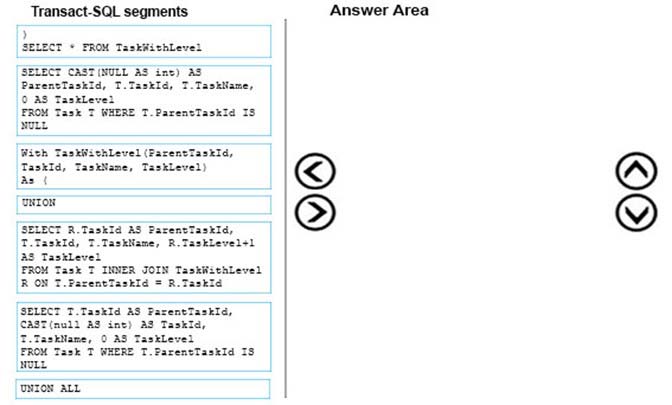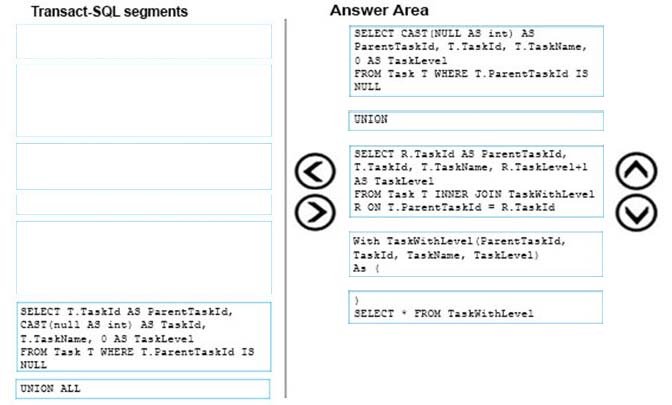

DRAG DROP -
Note: This question is part of a series of questions that use the same scenario. For your convenience, the scenario is repeated in each question. Each question presents a different goal and answer choices, but the text of the scenario is exactly the same in each question in this series.
You query a database that includes two tables: Project and Task. The Project table includes the following columns:

Task level is defined using the following rules:
You need to determine the task level for each task in the hierarchy.
Which five Transact-SQL segments should you use to develop the solution? To answer, move the appropriate Transact-SQL segments from the list of Transact-
SQL segments to the answer area and arrange them in the correct order.
Select and Place:

Tazul
Highly Voted 5 years, 11 months agomlourinho
5 years, 8 months agomlourinho
5 years, 7 months agoHoey
Highly Voted 5 years, 4 months agoAnirudh_net
Most Recent 3 years, 4 months agoDonPatrick
4 years, 6 months agoTheDUdeu
4 years, 10 months agoASQL
4 years, 9 months agoVermonster
4 years, 7 months agostm22
5 years agoM4x
5 years, 11 months agolh2607
4 years, 7 months ago